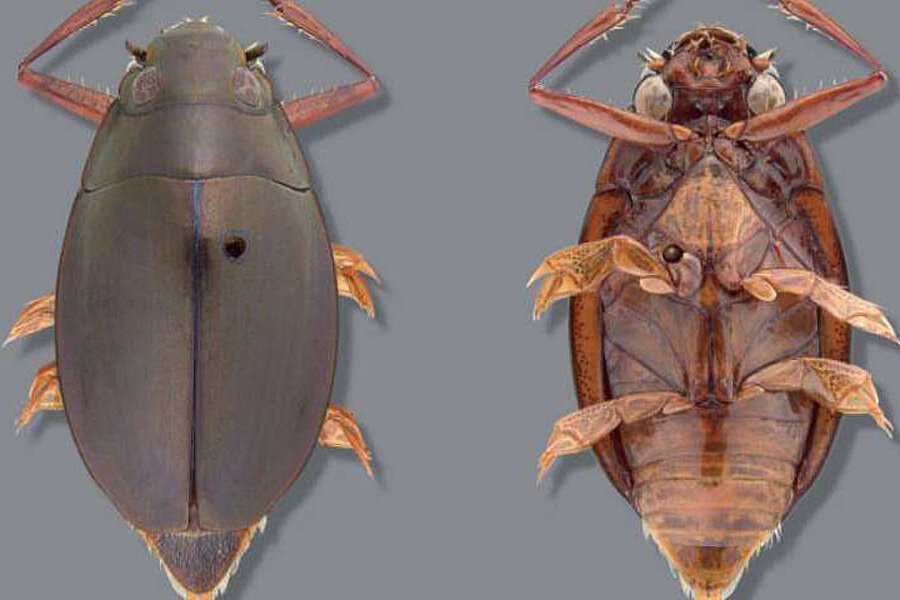New beetle species may already be endangered
A scientist has discovered a new species of whirligig beetle, the first new whirligig cataloged in more than two decades.
Grey Gustafson, a PhD student at the University of New Mexico, discovered these in April while hunting for a species in a different genus. Noticing the beetles looked a bit different, Mr. Gustafson collected a few samples.
A few months later, Gustafson confirmed his species was the same as 11 specimens kept at the Enns Entomology Museum at the University of Missouri. Collected in the 1970s, the specimens were never named nor confirmed as a new species.
In his new paper in the Annals of the Entomological Society of America, Gustafson describes the male and female beetles in detail, highlighting how these Dineutus shorti beetles differ from the previously known Dineutus discolor species.
Whirligig beetles are found in streams across the southern United States, but D. shorti lives only in areas with longleaf pines, including Conecuh National Forest in Alabama and Blackwater River State Park in Florida.
Gustafson argues D. shorti may live only in a narrow region in the Florida panhandle and southern Alabama.
"Longleaf pine forests once dominated the southern coastal plains region, but have been severely diminished, negatively affecting endemic species," writes Gustafson in his paper. "If D. shorti is restricted to areas of old-growth longleaf pine, and given the predicted loss of habitat within the region, this new species may already be worthy of formal protection status."
Biologists consider the Florida panhandle one of North America’s five richest biodiversity hotspots, so it’s no wonder that a new species was discovered here, and that more species probably await discovery, says Gustafson.
"That a large, charismatic beetle remained hereto undiscovered highlights the obvious need for increased surveys of the aquatic invertebrates of this region in order to discover unrecognized biodiversity, including other species of conservation concern," he writes.






